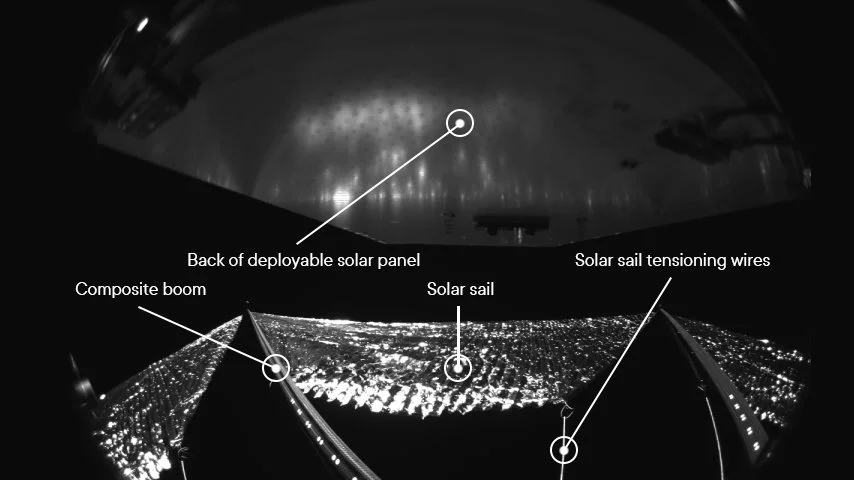NASA‘s ACS3 Satellite, Built by NanoAvionics, Successfully Deploys Solar Sail
The solar sail aboard NASA‘s Advanced Composite Solar Sail System (ACS3) satellite, using a spacecraft bus built by Kongsberg NanoAvionics („NanoAvionics“), has successfully deployed. The deployment, a primary objective of the ACS3 mission, was confirmed by telemetry and images captured by the satellite's onboard cameras.
The ACS3 mission, led and operated by NASA’s Ames Research Center in California‘s Silicon Valley, is a groundbreaking technology demonstration designed to test an 860-square-foot (80-square-meter) solar sail and new deployable composite boom technologies for future space missions. This novel propulsion method harnesses the pressure of sunlight on large reflective polymer sheets, offering a potential new means of propelling small satellites on long-duration missions without the need for traditional propellants. The composite booms may also be used for building complex structures on the Moon or even Mars, such as trusses for communications towers, surface shelters like hangars or very long antennas for rovers.
NanoAvionics contributed to this mission by designing and manufacturing the 12U nanosatellite bus, which serves as the test-bed for NASA’s solar sail technology. The satellite was deployed into its designated orbit on April 24, 2024, by Rocket Lab’s Electron launch vehicle from Mahia, New Zealand. With NanoAvionics support, NASA integrated the solar sail and other mission components into the satellite bus and has been managing the satellite’s operations.
Atle Gjerløw Wøllo, CEO of NanoAvionics, said: "We are immensely proud to have provided enabling technology to NASA in this pioneering technology demonstration. The entire NanoAvionics team is honored to have contributed to a mission with such importance and potential to improve humanity’s advancements in interplanetary exploration and settlement in space."
Data gathered from the solar sail deployment will support the advancement of this in-space propulsion technology. The following mission steps will re-engage the spacecraft’s attitude control system that was put in idle just before the deployment of the booms as part of the planned deployment sequence.
Next, NASA's mission operators will test the maneuvering capabilities of the sail in space. Raising and lowering the orbit of the ACS3 spacecraft will provide valuable information that may help guide future concepts of operations and designs for solar sail-equipped science and exploration missions.
NanoAvionics remains committed to providing reliable and innovative small satellite platforms for NASA’s and other federal agencies’ diverse mission needs, helping push the boundaries of space exploration.
NASA’s Small Spacecraft Technology program office, based at NASA Ames and led by the agency’s Space Technology Mission Directorate, funds and manages the mission.
